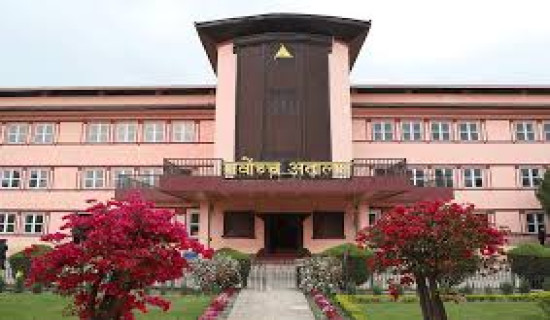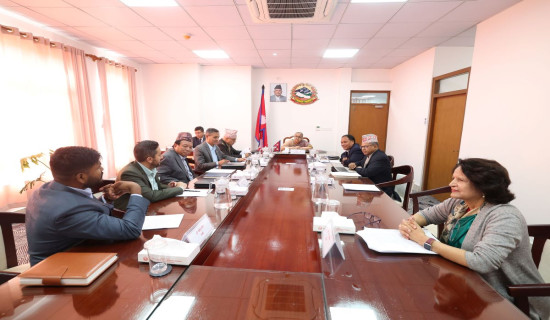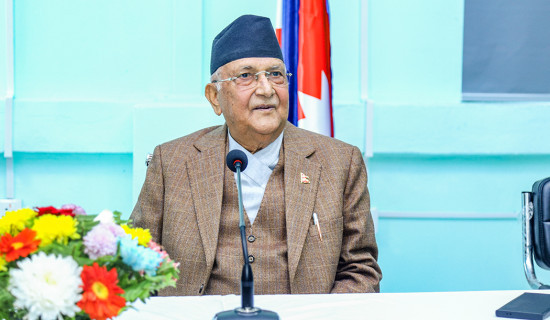- Tuesday, 18 November 2025
Constitution 2072: Nepal’s Most Progressive Constitution
Upadesh Yadav
Before the Constitution of 2004 BS, Nepal had no
written constitution. At that time, the country was under the absolute Rana
regime, which ruled Nepal for approximately 104 years. The king was merely a
figurehead; all power rested with the Rana prime minister and his family. The
system was a hereditary autocracy in which the prime minister’s office remained
within the Rana family. Citizens had no fundamental rights—freedom of the
press, freedom of expression, or the right to organize did not exist. Administration,
the military, and the judiciary were all under the Rana’s control, and basic
services like education, health, and transportation were extremely limited and
did not reach the general population.
The Rana dynasty, ruling Nepal from 1846 to 1951 AD, reduced the Shah monarch to a nominal ruler and established an absolute rule. During this period, significant global developments occurred in favor of democracy and republics. In 1848, European countries (France, Germany, Italy, and Hungary) experienced the “Springtime of Nations,” demanding constitutional rights and democratic governance. The American Civil War (1861–1865) ended slavery and strengthened the federal republic. Similarly, the unification of Italy (1870–1871) and Germany (1871) led to the creation of constitutional nation-states. The 1905 Russian Revolution introduced a parliamentary system (Duma), and the 1917 Bolshevik Revolution set a new precedent for political transformation. After World War II, in 1945, the United Nations was established, promoting human rights and democratic values worldwide. India gained independence in 1947, moving toward a democratic republic, and West Germany established a federal democratic system in 1949. Meanwhile, China became a people's republic in 1949. During this period, constitutional rights, democratic practices, and republican ideals were spreading globally.
To respond to this international democratic wave and ensure the longevity of the Rana regime, Prime Minister Padma Shamsher Jung Bahadur Rana issued the “Confidential Regulation of the Government of Nepal 2004” in 2004 BS, marking Nepal’s first written constitution. In practice, however, the Ranas’ absolute rule remained unchanged. The constitution appeared democratic on paper but was structured to remain under Rana control. Although King Tribhuvan was nominally granted some authority, executive power remained with the Rana prime minister. The parliament existed only in name, with members dependent on the prime minister’s selection. Citizens had no protection for rights, freedom of press, or political party formation.
In 2007 BS (1951 AD), the Rana regime ended, and political events accelerated. Following the death of King Tribhuvan on Kartik 19, 2012 BS (1955 AD), his son King Mahendra ascended the throne. Between 2012 and 2015 BS, King Mahendra established an autocratic system to maintain political stability and consolidate power. He introduced Nepal’s first modern written constitution in 2015 BS, which laid the foundation for a constitutional monarchy. This constitution placed supreme power with the king; parliament and other institutions remained under royal control. King Mahendra pressured political parties like the Nepali Congress to legitimize his rule. Subsequent constitutions and political practices reflected dissatisfaction, leading King Mahendra to strengthen king-centric governance further in the 2019 BS constitution, maintaining supreme royal authority over the executive, legislature, and judiciary. Political parties had limited autonomy, and multi-party democracy was restricted. In essence, King Mahendra’s constitutions suspended democratic practices and shifted Nepal toward a Panchayat-style governance system. His reign marked a transitional period from autocratic monarchy to eventual democratic movements.
The Constitution of 2047 BS was the achievement of the People's Movement of 2046 BS. This movement was a major pro-democracy uprising against the Panchayat system, born from long-standing public dissatisfaction and political repression. The Panchayat system had restricted party activities, suppressed free political expression, and increased corruption and inequality. In response, student organizations, civil society, and political parties united to organize widespread demonstrations, strikes, sit-ins, and rallies in Kathmandu and other cities. After several months, public pressure forced King Birendra to end the Panchayat system and restore multi-party democracy. The 2047 BS Constitution thus became a historic document establishing multi-party democratic governance in Nepal, ending the Panchayat system after the 2046 People’s Movement.
The 2047 BS Constitution made the king a constitutional head while executive power resided with the prime minister and the council of ministers. It introduced parliamentary democracy with a parliament formed through popular elections. Citizens’ rights—including freedom of expression, religion, education, and communication—were clearly protected. Political parties gained freedom, and government formation through multi-party elections was guaranteed. This constitution laid the foundation for Nepal’s political structure, administration, and legal governance, facilitating the transition from absolute monarchy and Panchayat system to multi-party democracy.
Despite making the king a constitutional head, political maneuvering and interference continued, challenging democratic consolidation. Political parties became more vigilant in protecting constitutional limits and democratic rights. They actively engaged in parliament, mobilized public support, and protested royal interference through demonstrations and rallies. Learning from past failures, parties developed internal collaboration and shared strategies. The Maoist insurgency (10-year People’s War) played a crucial role in raising political awareness, promoting social equality, energizing parties, and advancing constitution-making. On Jestha 19, 2058 BS, ten members of the royal family were killed in the palace massacre. King Gyanendra ascended the throne, initially as a constitutional monarch, but later dissolved parliament and began direct rule, signaling a concentration of power beyond constitutional limits. Widespread public discontent followed. Eventually, the Maoists joined the peace process, and major political parties, civil society, students, workers, and farmers united in the 2062–63 BS second People’s Movement. The combination of the Maoist People’s War and the 19-day uprising led to victory, resulting in the Interim Constitution of 2063 BS, paving the way for the abolition of monarchy, establishment of a republic, secularism, and federalism. Nepal’s first Constituent Assembly abolished the 240-year-old Shah monarchy on Jestha 15, 2065 BS.
Looking back at Nepal’s political history, each constitution emerged from political events, power struggles, or popular movements. However, most constitutions reflected the decisions of a limited power center or the king’s wishes and failed to meet the people’s aspirations. In this context, the Constitution of 2072 BS represents a historic achievement, crafted by the people themselves to shape their future, making it Nepal’s most progressive constitution.
The most significant feature of the 2072 BS Constitution is people’s participation. Prepared through two Constituent Assemblies with representation of millions, this constitution institutionalized the sacrifices and struggles of the Nepalese people. Unlike previous constitutions declared by the king, this document was created through direct participation and consensus, giving it unique significance.
The 2072 BS Constitution declares Nepal a federal democratic republic. Previously, Nepal was a monarchy where sovereignty ultimately rested with the king. The new constitution clearly states that sovereignty resides with the people and establishes that state power operates through them. The federal, provincial, and local structure decentralizes power, bringing government closer to citizens.
Another feature is the extensive protection of fundamental rights. Rights to education, health, employment, housing, food security, social protection, and protection for women, children, Dalits, indigenous communities, and persons with disabilities are guaranteed as fundamental rights. The constitution not only grants citizens rights but also obligates the state to implement them in practice.
The 2072 BS Constitution also lays the foundation for inclusive democracy. Political bodies ensure mandatory participation of women, Dalits, indigenous peoples, marginalized groups, and minorities. Through proportional representation and reservation systems, communities historically left behind gain access to all levels of government. This makes Nepalese democracy more inclusive and just.
The constitution provides for independent constitutional bodies. It maintains checks and balances among the executive, legislature, and judiciary, empowering institutions like the Election Commission, Commission for the Investigation of Abuse of Authority, and National Human Rights Commission. These bodies are expected to strengthen democracy and prevent misuse of power.
Thus, the Constitution of Nepal 2072 is not just a legal document but a historical guide for Nepal’s democratic journey. It addresses past weaknesses and opens doors to new possibilities. While challenges remain in implementation—political stability, good governance, inclusive practices, and practical enforcement of fundamental rights—the structure, philosophy, and people-centric approach make the Constitution undoubtedly Nepal’s best and most progressive constitution to date.

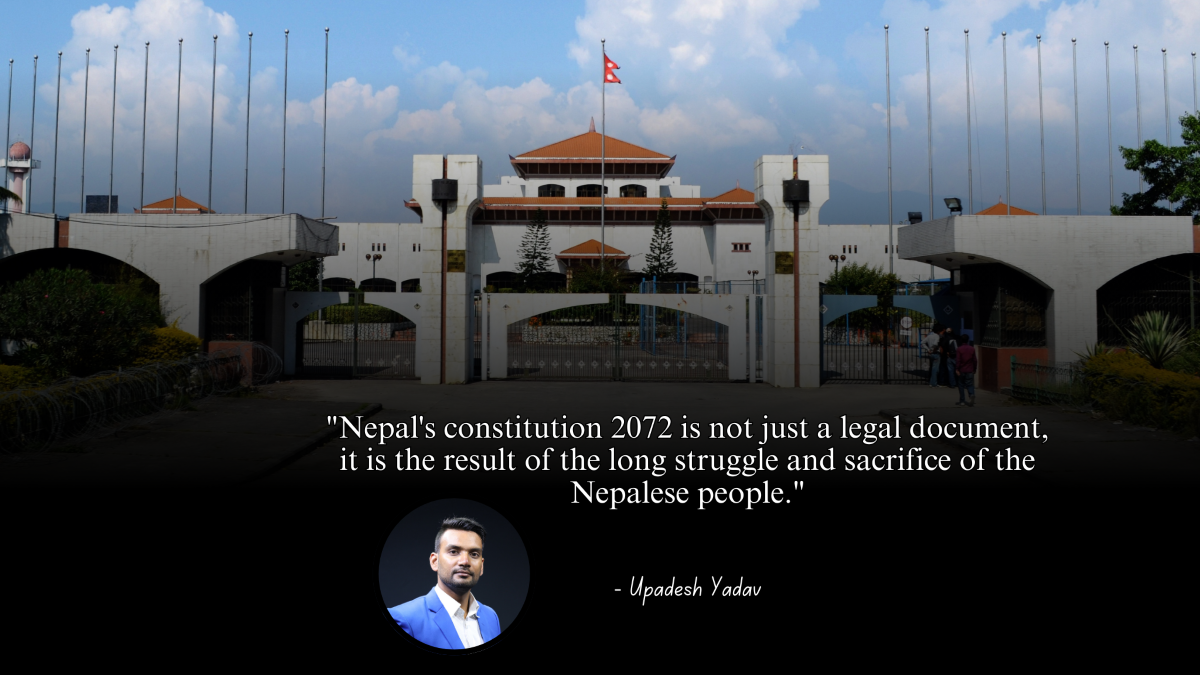
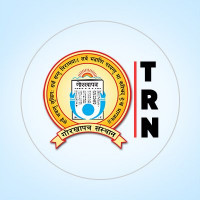
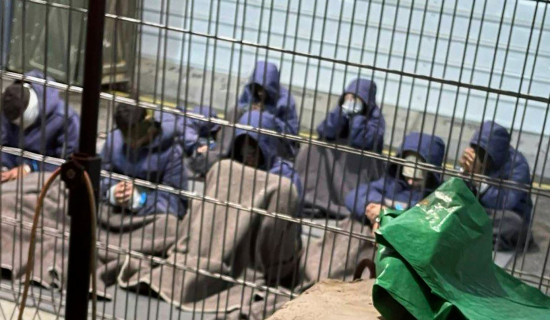
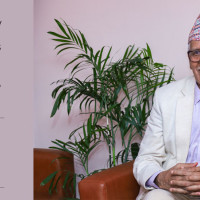


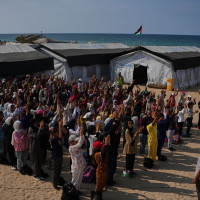

-original-thumb.jpg)

